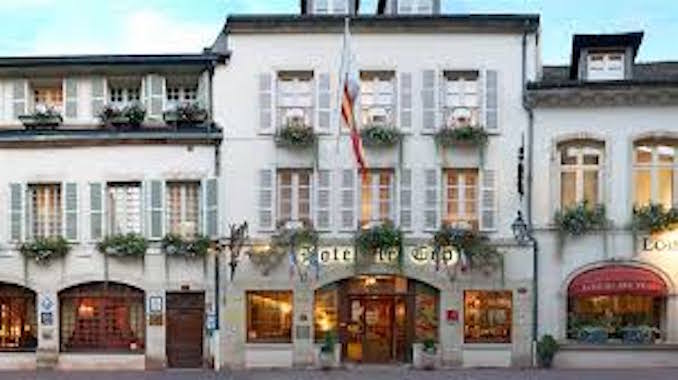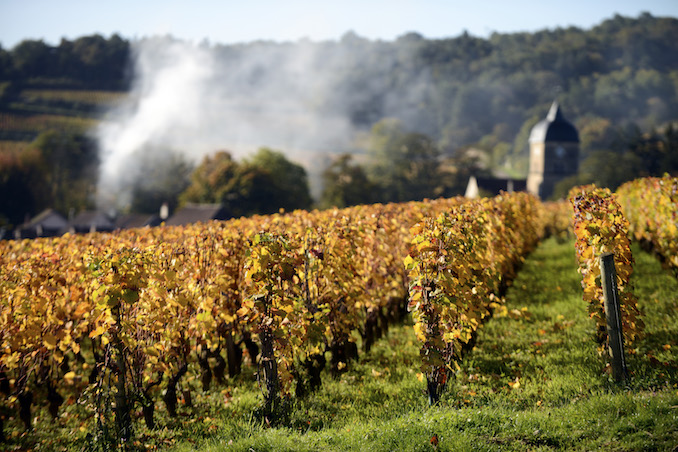
Words: Winsor Dobbin
One of the most rural areas of France offers many gourmet treats, travel editor Winsor Dobbin discovers.
The French region of Burgundy (or Bourgogne in French) is a place of pilgrimage for wine and food lovers from around the globe, who come to explore and taste wines from the finest chardonnay and pinot noir vineyards on earth. While this region a couple of hours south of Paris may be world-renowned for its wine it is also a great destination for Renaissance chateaux, medieval abbeys and fortified villages; most unspoiled by mass tourism.
This quiet country region (Dijon and Beaune are the only cities of size) also boasts some of France’s most spectacular castles. Chateau d’Ancy le Franc is styled on the Italian Renaissance; while Chateau de Cormatin is a survivor from the days before the revolution. The basilica of Vezelay, the abbey of Cluny and the abandoned Fontenay Abbey are among the must-see sights.
At Burgundy’s rural heart lies the Morvan National Park, a massive expanse of unspoiled wilderness. It is dotted with lakes and picturesque villages, many of which have family-run brasseries in their tree-shaded squares. But it is the wines and gourmet cuisine that are the major drawcards. Boeuf bourguignon is the region’s signature dish, however there are scores of other local specialities, including cheeses from the village of Epoisses, snails, foie gras, frogs’ legs, jambon persillé, sweetbreads and poultry.
While the Cote d’Or region (home to rock star wine villages like Gevrey Chambertin, Puligny-Montrachet and Meursault) is home to the greatest wines, there are bargains to be found in the neighbouring Chalonnaise and the Mâconnais. The centre of the Burgundy wine trade – midway between Paris and Geneva – is the pretty town of Beaune, dotted with wine bars, cafes, tasting facilities and boutique hotels, and is almost certainly the best base for wine tourists.
Great chardonnays and pinots noir come from this region; stretching from Chablis in the north to just above Lyon in the south. The greatest wines from producers like Domaine de la Romanee-Conti are stratospherically priced.
Take a ride on the ubiquitous petit train with tourists from around the world to discover the many winding old streets and then take a tour of the magnificent Hospice de Beaune, where the original hospital building, the Hotel Dieu, is one of the finest remaining examples of French 15th-century architecture and is now a fascinating museum. Wine lovers will also enjoy the Museé du Vin de Bourgogne, while the outdoor Saturday food market here is legendary.
Spend a night or two in the Hotel Le Cep, a collection of 14th-18th century buildings that is part of Small Luxury Hotels group and a perfect base for exploring the many vineyard hamlets. It’s at 27 Rue Maufoux in the old town centre but within strolling distance of the vines. There are 64 air-conditioned guest rooms, charmingly decorated in traditional French style. The on-site Loiseau des Vignes restaurant features dozens of wines by the glass thus providing the perfect solution for anyone wanting to sample great Burgundies without breaking the bank.
Other stellar Beaune dining choices include Les Jardin des Ramparts, L’Ecusson, Le Goret and funky little Le Gourmandin.
Out in the regions, key dining choices include Le Montrachet in Puligny-Montrachet, Maison Lameloise in Chagny, L’Esperance outside Vezelay, the Hostellerie de Levernois and La Cote Saint Jacques in Joigny. A recent visit from key people from the Bureau Interprofessionel de Vins de Bourgogne was aimed at encouraging Australians to re-try not Domaine Romanee Conte, Domaine Leroy, Henri Jayer and other benchmarks, but instead to sample entry-level and affordable wines.
Wines from communes like Mercurey, Givry and Irancy have cleaned up their act in recent years. Instead of typically whiffy characters, many of the village and Bourgogne rouge and blanc wines are fresh and clean.
Headed by Amaury Devillard from Domaines Devillard, which owns wineries in Givry and Mercurey and vines across the region, the mission also aimed to promote wines made from lesser-known Burgundy varieties, including Sauvignon de St Bris, Bourgogne Aligote and the gamay/pinot noir blend formerly known as Passetoutgrains but now labelled Cotes de Bourgogne.
Also Cremant de Bourgogne, the region’s sparkling wines. Devillard said: “People recognise that Bourgogne wines are very good, but also see them as being very expensive. Our message today is that there are a lot of hidden gems within the region.
“Beautiful wines exist that offer classic expressions of Bourgogne without the high price tags. There are wines with freshness, balance, and also depth and length, that are available. The key is in finding these wines and discovering them.” That quest will be aided by the fact that yields were up substantially in both the 2017 and 2018 vintages.
“Both years had beautiful quality and style,” says Devillard. “Even though 2018 was a hot summer we were very pleased with the balance of the fruit.” Devillard points to appellations like Pernand-Vergelesses, Marsannay, Mercurey and Montagny as offering particularly good value.
“A lot of Macon wines are also very good, and what we believe is a good bottle of Burgundy wine is an empty bottle. The message is that you do not have to spend a fortune to find a wine you are pleased to come back to. Wines from Bourgogne also shine with food. Many are also perfect to enjoy now. They don’t need to be cellared for years. The consumer has never had so much opportunity to get a good experience without spending a lot of money.”

